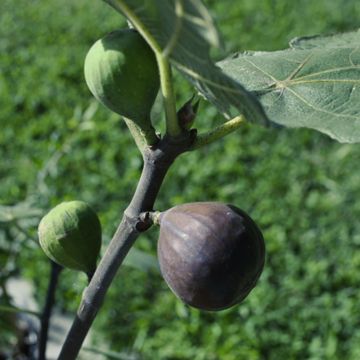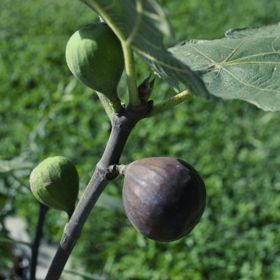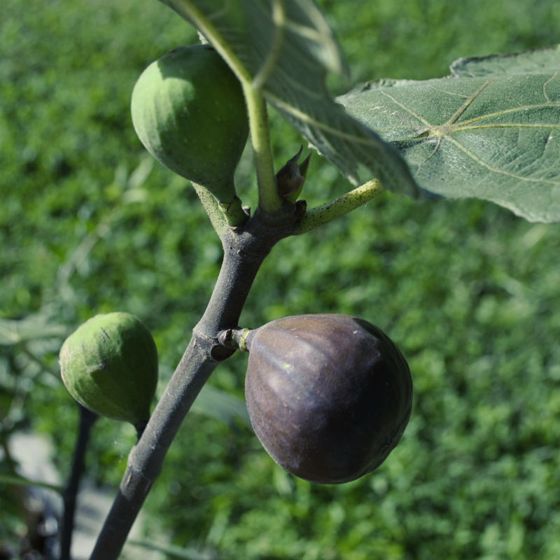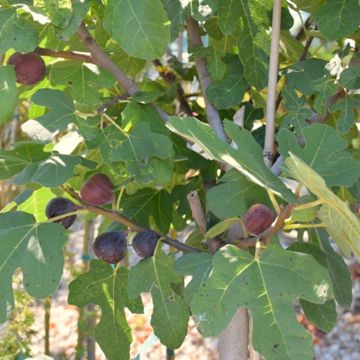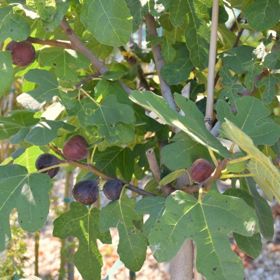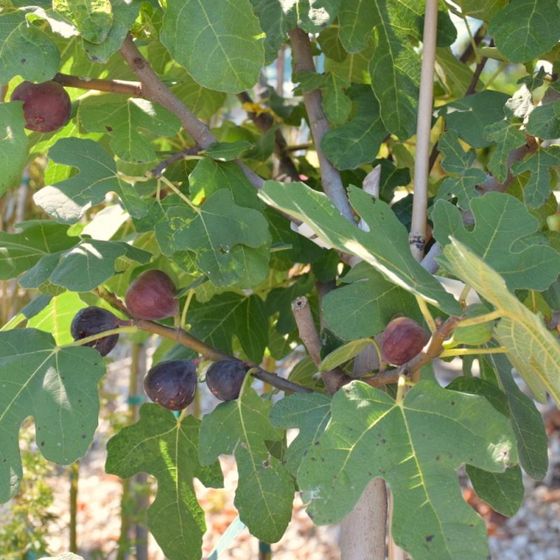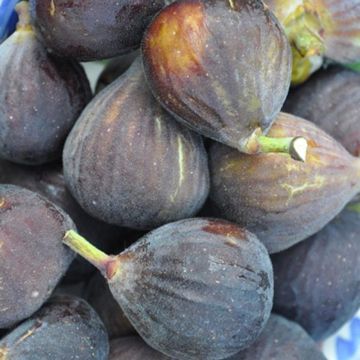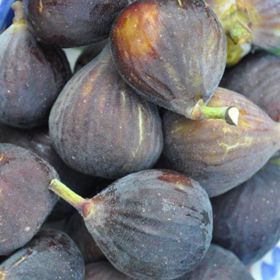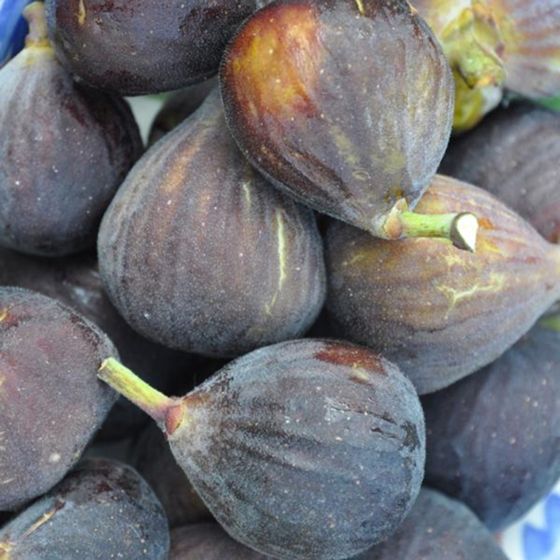Chicago Hardy Fig Tree
Description
About Chicago Hardy Fig Trees
The Chicago Hardy Fig tree is known for being especially cold hardy and producing small, brown to purple colored figs. The inside of the fruit is colored a lovely shade that looks like strawberry jam. This plant is also known as the Bensonhurst Purple fig or the Hardy Chicago.
It is productive and easy to grow, exhibiting drought-tolerance once established. The Chicago Hardy may die back in colder climates and resume growth in the spring. It bears fruit early on the new growth. Figs that grow on the older wood will appear in early summer. This plant is heat tolerant and self-pollinating, meaning that it does not need to be planted near another variety of fig to produce fruit.
This is the perfect plant to accent your patio—with the bonus of fresh figs! The cheerful foliage has attractive broad leaves, and the figs grow green until ripening into darker fruit. When planting in containers, the fig can be brought indoors during the winter months.
Using the Fruit and Leaves
Fig trees, ficus carica, have been a favorite fruit tree since ancient times, loved for their sweetness and rich flavor. They are enjoyable to eat fresh and can be used in salads, charcuteries, and with cheese. Chefs use their sweet flavor for desserts, and they can be dehydrated, canned, and frozen.
Figs are a good source of fiber, calcium, iron, potassium, and magnesium. They are also high in vitamins A and C.
Even the leaf is a source of food from this productive tree! The broad, flat leaves are often used for grilling, steaming, and baking, where they impart a smoky flavor to other foods. Additionally, the dehydrated leaves can be made into tea.
Growing Chicago Hardy Fig Trees
Grown in the ground, the Chicago Hardy Fig can reach between ten to fifteen feet in height. In a garden pot, the tree’s height will be reduced by the size of the container. Fig trees thrives in warm climates with well-draining soil and plenty of sunlight. These deciduous trees yield delicious fruits and can be cultivated in both outdoor gardens and large containers, providing ample space for their expansive growth.
Overwintering Fig Trees in Cooler Climates
If you experience temperatures below freezing, then additional winter protection is necessary for best results.
Potted figs should be placed in an insulated, unheated, preferably dark room or cool basement. Water them monthly until just moist so the roots do not dry out completely.
For fig trees planted in-ground, insulate as much as possible by getting creative. Use chicken wire and burlap or surround with straw bales stuffed with leaves. The pliable branches can be bent in to preserve as much as the plant as possible. What is not covered, will likely die back. Figs fruit on new growth and the insulated roots will send out new growth, even if the top dies.
Buy a Chicago Hardy Fig tree and enjoy delicious figs and from this hardy plant.
Survival Guaranteed!


Since 1816, Stark Bro’s has promised to provide customers with the very best fruit trees and plants. It’s just that simple. If your trees or plants do not survive, please let us know within one year of delivery. We will send you a free one-time replacement, with a nominal shipping fee of $9.99. If the item in question is not available, we can issue a one-time credit to your account equaling the original product purchase price or issue you a refund. Read more about our warranty policy.
Characteristics
| Fruit Color | Purple |
| Fruit Size | Medium |
| Hardiness Zone Range | 2 - 10, Outdoor Planting: 5 - 10 |
| Pollination | Self-Pollinating |
| Ripens/Harvest | July Through Frost |
| Shade/Sun | Partial Shade - Full Sun |
| Soil Composition | Loamy |
| Soil Moisture | Well Drained |
| Soil pH Level | 6.0 - 6.5 |
| Taste | Sweet |
| Texture | Fine Grained |
| Years to Bear | 1 - 2 |
Size & Spacing
Mature Size
Recommended Spacing
Zone Compatibility
Pollination
This variety is self pollinating.
Tools & Supplies
Planting & Care
Learn all about how to grow fig trees in The Growing Guide. An entire section of our website dedicated to your growing success.
Shipping Information
Estimated Delivery Date
Arrives when it's time to plant
Questions & Answers
Customer Reviews
More items we think you'll love!
 On Sale
This variety is compatible with your location
On Sale
This variety is compatible with your location
 On Sale
This variety is compatible with your location
On Sale
This variety is compatible with your location
 On Sale
This variety is compatible with your location
On Sale
This variety is compatible with your location
 On Sale
This variety is compatible with your location
On Sale
This variety is compatible with your location
 On Sale
This variety is compatible with your location
On Sale
This variety is compatible with your location
 On Sale
This variety is compatible with your location
On Sale
This variety is compatible with your location

